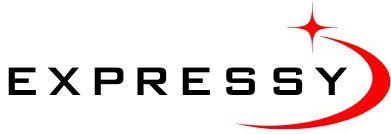In an era defined by rapid urbanization, technological advancements, and evolving tenant expectations, the landscape of property management has become increasingly complex. From residential portfolios and commercial complexes to sprawling community developments, managing properties effectively demands precision, efficiency, and foresight. Gone are the days when manual ledgers and fragmented spreadsheets sufficed. Today, property owners, managers, and real estate professionals are turning to powerful digital tools to streamline operations, enhance tenant experiences, and maximize their investments.
This pivotal shift is driven by the advent of property management software – a transformative technology that automates tedious tasks, centralizes crucial data, and provides invaluable insights. But what exactly does this software entail? How is it revolutionizing the real estate sector globally, and what specific considerations arise when deploying property management software in UAE‘s vibrant and fast-growing market, particularly in a key hub like Dubai? This comprehensive guide will explore these questions, offering a deep dive into the features, benefits, and strategic importance of modern property management solutions.
Understanding the Core: What is Property Management Software?
At its essence, property management software is an integrated digital platform designed to help landlords, property managers, and real estate companies manage all aspects of their property portfolios more efficiently. It centralizes information and automates a wide range of tasks traditionally handled manually, thereby reducing administrative burden, minimizing errors, and improving overall operational flow.
Think of it as the central nervous system for your property operations, connecting owners, tenants, maintenance staff, and financial data in one cohesive environment. Before the widespread adoption of this software, managing properties involved juggling disparate systems: one for accounting, another for lease agreements, separate spreadsheets for maintenance requests, and manual tracking of tenant communications. This fragmented approach often led to inefficiencies, missed deadlines, data discrepancies, and a reactive management style.
Key Functions and Modules of Property Management Software:
While features can vary depending on the target market (residential, commercial, HOA, vacation rentals) and vendor, most robust property management software typically includes modules for:
- Tenant and Lease Management: This is a core function, allowing managers to store comprehensive tenant information, manage lease agreements (creation, renewals, terminations), track lease terms, and automate reminders for important dates.
- Rent and Financial Accounting: Automates rent collection, tracks payments, handles late fees, manages expenses, generates financial reports (income statements, balance sheets), and often integrates with general ledger accounting.
- Maintenance and Work Order Management: Streamlines the process of managing property repairs and maintenance. Tenants can submit requests online, and managers can assign tasks to technicians, track progress, manage vendor details, and monitor costs.
- Online Portals (Tenant & Owner): Provides self-service portals where tenants can pay rent, submit maintenance requests, view lease documents, and communicate with management. Owner portals offer transparency into financial performance, occupancy rates, and property status.
- Marketing and Vacancy Management: Helps list vacant units, manage online syndication to listing sites, track leads, schedule showings, and process applications. Some systems also include tenant screening tools (background checks, credit checks).
- Reporting and Analytics: Generates various reports on occupancy rates, financial performance, maintenance costs, tenant turnover, and more, providing critical insights for strategic decision-making.
- Communications Management: Centralizes communication with tenants (announcements, notices), owners, and vendors, often including automated email and SMS capabilities.
- Document Management: Securely stores important documents such as lease agreements, invoices, inspection reports, and tenant applications, making them easily accessible.
- Property & Unit Tracking: Maintains detailed records for each property and individual unit, including amenities, square footage, photos, and historical data.
The Evolution of Property Management Software:
The journey of property management software has mirrored technological advancements. Early versions were often desktop-based, limited in scope, and lacked robust integration. The rise of the internet ushered in web-based solutions, allowing for remote access. Today, the dominant model is cloud-based property management software (SaaS – Software as a Service).
Cloud solutions offer unparalleled benefits:
- Accessibility: Manage properties from anywhere with an internet connection.
- Scalability: Easily scale up or down based on portfolio size without major infrastructure investment.
- Automatic Updates: Vendors handle software updates, security patches, and backups.
- Reduced IT Costs: No need for dedicated servers or extensive in-house IT support.
- Enhanced Collaboration: Facilitates seamless collaboration among team members.
The integration of artificial intelligence (AI) for predictive maintenance, advanced analytics for market trends, and mobile apps for on-the-go management continues to push the boundaries of what this software can achieve.
Navigating the Landscape: Property Management Software UAE
The United Arab Emirates (UAE) is a global leader in real estate development, boasting iconic skyscrapers, ambitious master-planned communities, and a constantly expanding property market. From high-rise residential towers in Dubai and Abu Dhabi to sprawling commercial hubs and new tourist destinations, the sheer volume and diversity of properties necessitate highly efficient management solutions. This makes the adoption of sophisticated property management software in UAE not just an option, but a strategic imperative.
Unique Characteristics of the UAE Property Market Demanding Specialized Software:
- Rapid Growth and Large-Scale Developments: The UAE’s property sector is characterized by continuous, large-scale projects. Managing hundreds or thousands of units across multiple developments requires software that can handle significant scale and complexity, offering robust portfolio management features.
- Diverse Property Types: The market includes a wide array of residential (apartments, villas), commercial (offices, retail, industrial), hospitality (hotels, serviced apartments), and mixed-use properties. The ideal software must be flexible enough to accommodate the unique operational needs of these different asset classes, or specialized vertical solutions are often required.
- High Expatriate Population & Transient Tenancy: The UAE has a large expatriate population, leading to a dynamic tenancy landscape. The software needs to efficiently manage frequent tenant turnovers, handle international payments, and support diverse communication needs.
- Specific Lease Laws and Regulations: While generally business-friendly, the UAE has its own specific lease laws, Ejari registration requirements (in Dubai), and other property-related regulations. The best property management software in UAE must be compliant with these local legal frameworks and facilitate necessary registrations and reporting.
- Multi-Currency and Multi-Language Support: Given its global nature, businesses often deal with multiple currencies. Software that can handle multi-currency transactions and provide reporting in both English and Arabic is highly advantageous.
- Focus on Digital Transformation: The UAE government and private sector are heavily invested in digital transformation (e.g., UAE Vision 2021/2071, Smart Dubai initiatives). Property management solutions that leverage cutting-edge technology, integrate with digital government services, and offer advanced analytics are highly sought after.
- Service Charge Management (for Strata Properties): For community and apartment complexes, accurate and transparent service charge calculation, billing, and collection are critical. Software with robust features for managing shared expenses and budgets is essential.
- Post-Handover Management: For developers, managing properties post-handover, including defect management, warranty tracking, and community management, requires specialized features often integrated within or alongside property management platforms.
Key Considerations When Choosing Property Management Software in UAE:
- Local Compliance: Ensure the software specifically supports UAE VAT, Ejari registration (for Dubai), and other local tenancy laws and financial regulations.
- Integration Capabilities: Look for systems that can integrate with local payment gateways, utility providers, and government e-services.
- Scalability for Growth: Choose a solution that can grow with your portfolio size and complexity, accommodating new properties, units, and services.
- Robust Security: Data security and privacy are paramount. Ensure the vendor adheres to high security standards and data residency requirements if applicable.
- Mobile Functionality: Given the fast-paced environment, mobile apps for property managers, tenants, and maintenance teams are highly beneficial.
- Vendor’s Local Presence & Support: A vendor with local offices, implementation partners, or a dedicated support team in the UAE can provide invaluable market insights and timely assistance.
- Customization and Flexibility: The ability to customize workflows, reports, and tenant portals to align with specific business processes and branding.
Implementing the right property management software in UAE is not just about adopting technology; it’s about strategically positioning your real estate assets for optimal performance, enhanced tenant satisfaction, and sustained profitability in a dynamic and competitive market.
The Epicenter: Property Management Software Dubai
As the jewel in the crown of the UAE’s real estate market, Dubai sets global benchmarks for urban development, luxury living, and innovation. Managing properties in this high-stakes, high-growth environment demands an unparalleled level of efficiency, transparency, and tenant focus. This is precisely why sophisticated property management software Dubai has become an indispensable tool for real estate professionals and investors alike.
Why Property Management Software is Essential in Dubai:
- Scale and Complexity of Properties: Dubai boasts an astonishing array of properties, from the world’s tallest residential towers to sprawling villa communities, mixed-use mega-developments, and vast commercial districts. Managing thousands of units across diverse locations, each with unique features and tenant profiles, is logistically impossible without advanced software.
- High Tenant Turnover: Due to Dubai’s large expatriate population and dynamic job market, tenant turnover can be higher than in more stable markets. This requires a system that can efficiently handle frequent move-ins, move-outs, lease renewals, and associated administrative tasks.
- Ejari Registration Compliance: In Dubai, all tenancy contracts must be registered with Ejari, a system administered by the Real Estate Regulatory Agency (RERA). A top-tier property management software Dubai should integrate seamlessly with Ejari to automate registration, renewal, and termination processes, ensuring legal compliance and avoiding penalties.
- Diverse Payment Methods and Currencies: Tenants in Dubai come from all over the world, often leading to varied payment preferences and the need to manage transactions in multiple currencies. The software must be flexible in handling various payment gateways and offering multi-currency support.
- Smart City Initiatives: Dubai is a leader in “Smart City” initiatives, encouraging digital services and connectivity. Property management software that aligns with this vision, offering online portals, mobile apps, and integration with other smart home or community technologies, is highly valued.
- Investor Transparency and Reporting: Many properties in Dubai are owned by international investors who demand clear, real-time insights into their assets’ performance. Software with robust owner portals and customizable financial reporting capabilities is crucial for building trust and attracting investments.
- Maintenance and Service Excellence: In a market known for luxury and high expectations, efficient and responsive maintenance services are paramount. The software streamlines maintenance requests, dispatches, tracking, and cost management, contributing directly to tenant satisfaction and property value.
- Aggressive Competition and Market Fluctuations: Dubai’s real estate market is highly competitive and can be sensitive to global economic trends. Software providing detailed market analytics, vacancy rates, and pricing insights helps property managers react quickly to market shifts and maintain competitive advantage.
Specific Features to Prioritize for Property Management Software Dubai:
- Ejari Integration: Non-negotiable for ensuring compliance and automating contract registration.
- VAT Compliance: Capability to accurately calculate, apply, and report VAT on rents and service charges as per UAE tax regulations.
- Multi-Currency Support: Essential for managing international financial transactions.
- Customizable Reporting for RERA: Ability to generate reports that align with local regulatory requirements and audit needs.
- Advanced Communications: Robust SMS and email notification features for tenant communications, especially important in a diverse, mobile-first city.
- Robust Security and Data Localization: Assurance that data is secure and, if preferred, stored within the UAE to comply with local data privacy considerations.
- Integrated Payment Gateways: Support for widely used payment methods and local banking integrations.
- Community Management Features: For managing facilities, amenities, and resident communication in large master-planned communities.
Investing in the right property management software Dubai is a strategic move that not only streamlines operations but also enhances profitability, ensures regulatory compliance, and elevates the tenant experience, making properties more attractive and valuable in one of the world’s most dynamic real estate markets.
The Transformative Benefits of Modern Property Management Software
The adoption of property management software delivers a multitude of benefits that collectively transform how real estate assets are managed, leading to enhanced efficiency, profitability, and tenant satisfaction.
-
Streamlined Operations and Automation: The most immediate benefit is the automation of routine, time-consuming tasks. This includes automating rent collection, sending payment reminders, generating late fees, scheduling maintenance, and renewing leases. By reducing manual data entry and repetitive administrative work, property managers can focus on more strategic activities like tenant relations, property improvements, and portfolio growth.
-
Improved Financial Management and Transparency: Software centralizes all financial data, providing a real-time, accurate picture of your portfolio’s financial health. It automates bookkeeping, tracks income and expenses, reconciles bank accounts, and generates comprehensive financial reports (e.g., income statements, balance sheets, cash flow reports, owner statements). This transparency allows property owners and investors to monitor performance, identify trends, and make informed financial decisions. Compliance with local tax regulations (like VAT in the UAE) is also significantly simplified.
-
Enhanced Tenant Satisfaction and Retention: Modern property management software often includes tenant portals that empower residents with self-service options. They can pay rent online, submit maintenance requests, track their status, and communicate directly with management. This convenience, combined with faster response times for issues (due to automated work orders), leads to a significantly improved tenant experience, fostering higher satisfaction and ultimately, better tenant retention rates.
-
Efficient Maintenance and Vendor Management: Managing repairs and maintenance is a significant part of property management. The software streamlines this process by allowing tenants to submit detailed requests, enabling managers to assign tasks to the right technicians or vendors, track progress, manage costs, and keep a historical record of all repairs. This leads to quicker resolution times, better asset longevity, and more transparent expense tracking.
-
Better Communication and Collaboration: By centralizing communication channels (portals, email, SMS), the software ensures that all interactions with tenants, owners, and vendors are recorded and easily accessible. This improves accountability and clarity. For management teams, it fosters better internal collaboration as everyone works from the same, up-to-date information.
-
Optimized Marketing and Reduced Vacancies: Many property management solutions include tools to market vacant units effectively. They can syndicate listings to popular rental websites, manage leads, schedule showings, and even assist with online applications and tenant screening. By speeding up the leasing process and improving lead conversion, the software helps reduce vacancy periods, ensuring consistent rental income.
-
Data-Driven Decision Making: The wealth of data collected by the system—on occupancy rates, rent collection trends, maintenance costs, tenant turnover, and market comparables—can be leveraged to generate powerful reports and analytics. These insights empower property managers and owners to make strategic decisions regarding pricing, property improvements, marketing strategies, and portfolio expansion.
-
Ensured Compliance and Reduced Risk: Property management involves adherence to numerous laws and regulations (e.g., fair housing, landlord-tenant laws, local registration requirements like Ejari in Dubai). The software can be configured to help ensure compliance by automating necessary documentation, tracking critical dates, and providing audit trails, thereby reducing legal risks and potential penalties.
-
Scalability and Growth Enablement: As a property portfolio grows, manual management becomes unsustainable. Property management software provides the necessary infrastructure to manage an increasing number of units and properties without a proportionate increase in administrative staff. This scalability is crucial for businesses aiming for rapid expansion.
In summary, adopting property management software transforms reactive, labor-intensive operations into proactive, data-driven strategies. It’s an investment that pays dividends by optimizing every facet of property management, from the smallest repair request to the largest financial report, ultimately leading to greater profitability and stronger relationships with tenants and owners.
Challenges and Best Practices in Implementation
While the benefits of property management software are compelling, successful implementation requires careful planning and execution. Overcoming potential challenges is key to maximizing your return on investment.
Common Challenges:
- Cost: Initial investment in software, training, and potential data migration can be significant, especially for comprehensive solutions.
- Data Migration: Transferring existing tenant data, lease agreements, financial records, and property details from old systems or spreadsheets can be complex, time-consuming, and prone to errors.
- User Adoption and Training: Staff members, accustomed to old methods, may resist a new system. Inadequate training can lead to frustration and underutilization of features.
- Integration Issues: Ensuring the new software seamlessly integrates with existing accounting systems, payment gateways, or other specialized tools can be technically challenging.
- Customization Needs: While off-the-shelf solutions work for many, specific business processes might require customization, which can increase costs and complexity.
- Security Concerns: For cloud-based solutions, ensuring data privacy and security is paramount, requiring due diligence on the vendor’s security protocols.
- Vendor Lock-in: Choosing the wrong vendor can make it difficult and costly to switch systems later.
Best Practices for Successful Implementation:
- Define Clear Goals and Requirements: Before looking at software, clearly articulate what problems you want to solve, what processes you want to improve, and what outcomes you expect.
- Involve Key Stakeholders: Get buy-in from property managers, accountants, maintenance staff, and even a few tech-savvy tenants early in the process. Their insights are invaluable.
- Thorough Research and Vendor Selection: Don’t rush. Evaluate multiple vendors, request demos, check references, and ensure the software aligns with your specific property types (residential, commercial, HOA, etc.) and regional requirements (e.g., Ejari for Dubai).
- Plan Data Migration Meticulously: Develop a detailed data migration strategy. Clean your existing data before transfer, and perform rigorous testing to ensure accuracy post-migration. Consider a phased migration if data volume is immense.
- Invest in Comprehensive Training: Provide adequate training for all users, tailored to their specific roles. Offer ongoing support and create clear user guides.
- Phased Rollout: For large portfolios, consider implementing the software in phases, starting with a smaller subset of properties or core modules, then gradually expanding. This allows for learning and adjustments.
- Prioritize Core Functionality: Begin by implementing the most critical features first. Avoid over-customization initially, as it can delay launch and complicate updates.
- Strong Project Management: Designate a dedicated project manager and team to oversee the implementation, manage timelines, and address issues.
- Continuous Improvement: After launch, regularly review the system’s performance, gather user feedback, and explore new features to continually optimize your operations.
- Negotiate Support and Service Level Agreements (SLAs): Ensure the vendor provides robust support, training, and clear SLAs for uptime and issue resolution.
By approaching implementation strategically and proactively addressing potential challenges, businesses can maximize the benefits of their property management software and transform their operations for long-term success.
Conclusion: The Future of Property Management is Digital
In an increasingly digitized and competitive real estate world, the adoption of advanced property management software is no longer a luxury but a fundamental necessity. It serves as the digital backbone that empowers property owners and managers to navigate the complexities of their portfolios with unparalleled efficiency, accuracy, and strategic insight. From automating the daily grind of rent collection and maintenance requests to providing real-time financial transparency, this software transforms reactive operations into proactive management.
The strategic importance of such solutions is particularly pronounced in thriving, dynamic markets like the UAE, and specifically in a global real estate hub like Dubai. Here, the unique confluence of rapid development, diverse tenancy, stringent regulations (like Ejari), and an overarching push for digital transformation demands a sophisticated, locally compliant, and scalable property management software Dubai. The right system not only ensures legal adherence but also elevates the tenant experience, optimizes asset performance, and provides the critical data insights needed to make informed investment decisions in a fast-paced environment.
Ultimately, investing in a robust property management system is an investment in the future resilience and profitability of your real estate assets. It transforms administrative burdens into strategic opportunities, fostering stronger relationships with tenants and owners alike. Embrace the power of digital transformation, and unlock the full potential of your property portfolio.
5 FAQs About Property Management Software
-
What types of properties can property management software manage? Modern property management software is highly versatile and can manage a wide range of property types. This includes residential properties (single-family homes, multi-family apartments, condominiums, HOAs/community associations), commercial properties (office buildings, retail spaces, industrial warehouses), vacation rentals, student housing, and even specialized properties like senior living facilities. Many software solutions offer specific modules or editions tailored to the unique needs of different property types.
-
Is cloud-based property management software more secure than desktop-based software? Generally, cloud-based property management software offers superior security compared to traditional desktop solutions. Cloud providers typically invest heavily in enterprise-grade security measures, including robust data encryption, regular security audits, redundant data backups, disaster recovery protocols, and dedicated cybersecurity teams. For desktop software, security is entirely the user’s responsibility, which often means less comprehensive protection unless a dedicated IT department is managing it diligently.
-
How does property management software help with tenant communication? Property management software significantly enhances tenant communication through various features:
- Online Tenant Portals: Allow tenants to submit requests, pay rent, and access documents at their convenience.
- Automated Notifications: Send automated emails or SMS for rent reminders, lease renewals, maintenance updates, or community announcements.
- Centralized Communication Hub: All communication is logged within the system, providing a clear history and ensuring no messages are lost.
- Mass Communication Tools: Quickly send notices to all tenants or specific groups.
-
Can property management software help me find new tenants? Yes, many modern property management software solutions include features designed to help with vacancy marketing and tenant acquisition. These often include:
- Vacancy Listing Syndication: Automatically publish vacant unit listings to popular rental websites and social media platforms.
- Lead Tracking: Manage inquiries from prospective tenants, schedule showings, and track conversion rates.
- Online Applications & Screening: Allow potential tenants to apply online and integrate with third-party services for background checks, credit checks, and eviction history reports.
- Website Integration: Some systems can help you create a professional website to showcase your available properties.
-
What’s the typical cost of property management software? The cost of property management software varies widely based on several factors:
- Number of Units: Most pricing models are tiered based on the number of units you manage.
- Features/Modules: More comprehensive solutions with advanced features (e.g., sophisticated accounting, detailed analytics, advanced marketing tools) will cost more.
- Deployment (Cloud vs. On-Premise): Cloud-based (SaaS) solutions usually have a recurring monthly or annual subscription fee, while on-premise solutions have higher upfront licensing costs plus ongoing maintenance.
- Vendor and Support: Premium vendors with extensive support and training may charge more.
- Additional Services: Implementation fees, data migration, and custom development can add to the total cost. Costs can range from as low as $10-$50 per month for very small portfolios with basic features, up to several hundreds or thousands of dollars per month for large enterprises with advanced needs.












